
Tim Coursey, Driving Lessons
Tim Coursey’s Driving Lessons is a very dense read but here’s what you get: At some point (about now, it seems) the mechanisms of the world—societal, meteorological—fall apart. As ordinary life itself—into these moments, apprehensive human moments, insecurely related but meticulously rendered, no less clearly than the frequent breakings down of common, everyday machinery that you are given to understand with great precision in correct professional terms. Somehow Coursey has found the correct emotional terms for the end of the world.
–David Searcy, author of The Tiny Bee that Hovers at the Center of the World
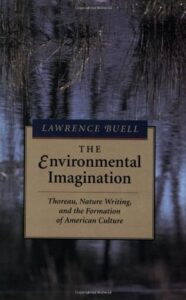
Lawrence Buell, The Environmental Imagination
The Environmental Imagination by Lawrence Buell has lit my own imagination as to what environmental storytelling can and cannot do, and his follow-up book, Writing for an Endangered World: Literature, Culture, and Environment in the U.S. and Beyond, travels along these same paths—that of examining not just environmental literature, but what “environment” means, its representation and conception, and how our current crisis is not just one of climate, but of our imaginations. While these have been out for some years (1996 and 2003), his ideas about rethinking environmental stories have repercussions that could last for hundreds, if not thousands of years.
–Kerri Arsenault, author of Mill Town
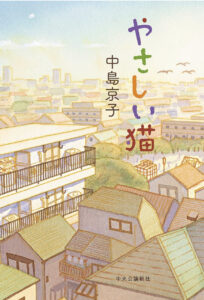
Kyoko Nakajima, Yasashii neko (The Kind-Hearted Cat)
A Japanese single mother falls in love with a Sri Lankan man and they marry, but their family is torn apart when he is thrown into an immigration detention center for overstaying his visa. Narrated by her teenage daughter, this compelling story gives a rare glimpse of the difficult conditions faced by immigrants who inadvertently fall through the cracks in society.
–Ginny Tapley Takemori, translator of She and Her Cat: Stories by Makoto Shinkai and Naruki Nagakawa
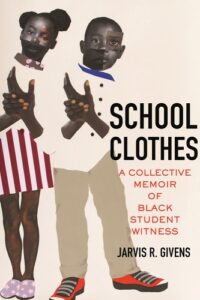
Jarvis Givens, School Clothes
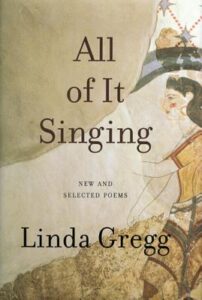
Linda Gregg, All of It Singing
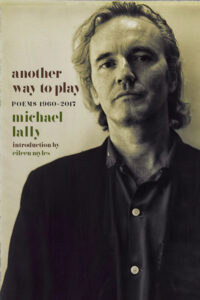
Michael Lally, Another Way to Play
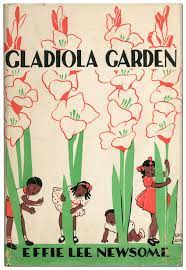
Effie Lee Newsome, Gladiola Garden: Poems of Outdoors and Indoors for Second Grade Readers

Solmaz Sharif, Customs
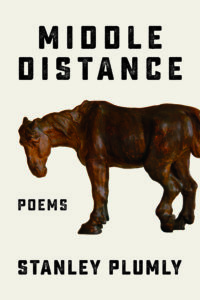
Stanley Plumly, Middle Distance
School Clothes by Jarvis Givens: a wonderful book on the history of black education, told with great care through the perspective of over 100 students who helped shape it. Various luminaries from throughout the black expressive tradition make appearances here (Angela Davis, William Sanders Scarborough, and Mary McCleod Bethune among others) and are placed within a much larger chorus of voices spanning back to the 18th century.
All of It Singing by Linda Gregg: one of the first poets that I share with any of my students interested in transferring our daily sense of astonishment, of unfettered awe, into language that others can enter. Gregg’s narration of our entanglement with the more-than-human world remains as timely as ever. I learn something new from these poems every time I read them.
Another Way to Play, Poems 1960-2017 by Michael Lally: I came across this book quite accidentally one day in Raven Used Books in Cambridge, and after reading more extensively online about Lally’s life and letters realized I had to go grab it before someone else did. The originality and range of the voices on display in this collection jarred me awake.
Gladiola Garden: Poems of Outdoors and Indoors for Second Grade Readers by Effie Lee Newsome: My colleague, the horticulturalist and public historian, Abra Lee, was the one who informed me of Effie Lee Newsome’s brilliant work during an installation devoted to black environmental writing at the New York Botanical Garden earlier this year, The Bond of Live Things Everywhere. Newsome, a Harlem Renaissance writer and educator, composed this book of nature poems (complete with a number of beautiful drawings) for black children in 1940. It is a text I deeply cherish.
Customs by Solmaz Sharif: an electric, inventive follow-up to her field-altering debut. Sharif has already established herself as one of the most distinctive voices in this generation of poets. Here, she continues to clarify the importance of a poetics grounded not only in the material realities of the present day, but a commitment to the collective pursuit of better and more liberatory dreams.
Middle Distance by Stanley Plumly: I have long considered Plumly to be one of my greatest teachers: a poet whose voice helped sharpen and shape my own from a distance. This collection, his last, holds no shortage of wonders.
–Joshua Bennett, author of The Study of Human Life
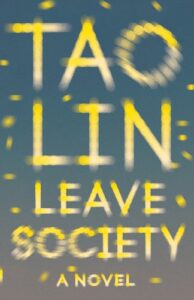
Tao Lin, Leave Society
Tao Lin’s Leave Society left a real mark on me. Sometimes you find a novel that opens up an entirely new kind of space for itself, and a radically different space for its reader to inhabit. I’ve always felt lost between generations, but this book makes me think I actually have one of my own—and Lin is its voice.
–David Boyd, co-translator of All the Lovers in the Night, by Mieko Kawakami

Jessica Au, Cold Enough for Snow
I was enchanted by Cold Enough for Snow by Jessica Au. The narrator, an Australian woman, is visiting Japan with her mother, who lives in Hong Kong. Perhaps it exacerbated a longing for Japan, which had until recently been closed to non-residents since 2020, but more so it was the interiority of the narrator’s voice, which beautifully captured the contemplative mood that can descend when traveling abroad, with or without a companion. The quiet descriptions of the relationship between mother and daughter and their attempts for connection were quite moving.
–Allison Markin Powell, co-translator of Lady Joker by Kaoru Takamura
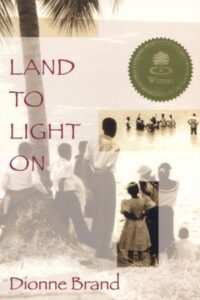
Dionne Brand, Land to Light On
I was searching for narratives about lines, ones that might define the architectures of oppression around us. I picked up Dionne Brand’s Land to Light On (1997) on a whim only to find pieces of myself scattered across pages that insist on excavating fractures of a people, and their place.
Grounded in her intimacies she crafts a cartography of pain that embraces my familiar, “his whole head soaked in that teardrop off the coast of India.” Borders are made irrelevant as she pulls our struggles closer together, placing us firmly inside a collective of displaced souls. The ones who have to “sweep this land up around your feet and point to the signs, pleat whole histories with pins in your mouth and guess at the fall of words.” A rare collection that deftly mingles suffering and resistance in the everyday, the lines of this book have shaped my political imagination.
–Nimmi Gowrinathan, author of Radicalizing Her: Why Women Choose Violence
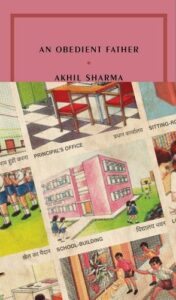
Akhil Sharma, An Obedient Father
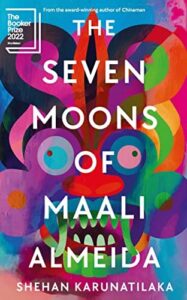
Shehan Karunatikla, The Seven Moons of Maali Almeida
As I grow older, I find myself becoming an inveterate rereader. Off the top of my head, for instance, I must have read Coetzee’s Waiting for the Barbarians every year since the turn of the century—it’s set in a world at once so distant and so familiar. During the Covid Era, in fact, I considered reorganizing my library between Books I’ve Read Once, Books I Haven’t Read Even Once, and Books I Reread All the Time.
In this proprietary taxonomy, I would also have to make space for Books I’ve Started: this year, I picked up a rich biography of Rudyard Kipling by Charles Allen, the prolific chronicler of colonial South Asia; Bill Bryson’s Shakespeare—Bryson can write about anything and make it great goddamn fun; and the H.A.R. Gibb’s translation of Ibn Butata’s fantastic Travels in Asia and Africa—all incidentally excavated from Old Books, the bookshop I frequent most in Karachi.
In a possibly unprecedented turn of events in the annals of literary history, the two novels I plan on rereading next have dramatically changed since I last picked them up. Akhil Sharma’s An Obedient Father was published in 2000 to much acclaim—in the Covid Era, he sat down and wrote the thing again. It was republished earlier in the year by McNally with a new beginning and end. How do you like that?
Then there is case of Shehan Karunatikla, a fellow DSC Prize-winner who spent as long as on his sophomore effort as I did—a decade altogether. But his opus, Chats with the Dead, dropped in the dead of Covid, and consequently, seemed dead in the water. When he rewrote it for a foreign edition, however, retitling it The Seven Moons of Maali Almeida, it won the Booker!
Reread, rewrite, repeat—the rewards are manifold.
–H.M. Naqvi author of The Selected Works of Abdullah the Cossack

Joshua Whitehead, Making Love With the Land
When I read Joshua Whitehead’s Jonny Appleseed, I knew I’d be following his work closely—his writing opens up new pathways of thought for me about how to inhabit this world. His latest book, a collection of essays called Making Love With the Land came out in November, and is a brilliant, deeply personal work of eco-erotic thought that looks at Indigenity, land, language, body, mental health, and more.
–Saskia Vogel, writer and translator of Strega: A Novel, by Johanne Lykke Holm
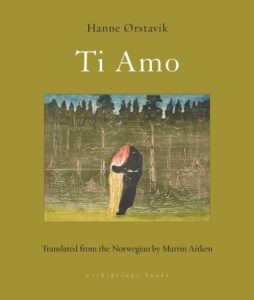
Hanne Hanne Ørstavik, trans. Martin Aitken, Ti Amo
I’ve been an Ørstavik superfan since reading her haunting novel Love a few years ago, and now I devour her books the moment they’re translated from Norwegian by the deeply gifted Martin Aitken for Archipelago Books. Ti Amo is a bracing anticipatory eulogy from an unnamed wife, a bereft woman sounding the depths of her love for her husband (and others) in the last months of his life. This nimble, surprising, fearless novel renewed me.
–Claire Vaye Watkins, author of I Love You But I’ve Chosen Darkness
__________________________________

The preceding is from the Freeman’s channel at Literary Hub, which features excerpts from the print editions of Freeman’s, along with supplementary writing from contributors past, present and future. Contributors: Leila Aboulela, Sulaiman Addonia, Julia Alvarez, Kali Fajardo-Anstine, Kerri Arsenault, Linnea Axelsson, Elizabeth Ayre, Diego Baez, Catherine Barnette, Chiara Barzini, Rick Bass, Lana Bastasic, Sam Bett, Joshua Bennett, David Boyd, Alexander Chee, Sandra Cisernos, Jaime Cortez, Jennifer Croft, Stuart Dybek, Geoff Dyer, Mariana Enriquez, Christy NaMee Eriksen, Athena Farrokzhad, Camonghne Felix, Aminatta Forna, Matthew Frank, Helen Garner, Ginny Tapley Takemori, Reyna Grande, Lauren Groff, Tess Gunty, Xiaolu Guo, A. Kendra Greene, Rawi Hage, Johan Harstad, Celia Hawkeworth, Juan Felipe Herrera, Kyle Dillon Herz, Ishion Hutchinson, Tania James, Cynan Jones, Mieko Kawakami, David Kirby, Rachel Kushner, Deborah Landau, Sasha taqwšəblu LaPointe, Robin Coste Lewis, Yiyun Li, Valeria Luiselli, Lauren Markham, Colum McCann, Semezdin Mehmedinovic, Daniel Mendelsohn, Maaza Mengiste, Claire Messud, Nadifa Mohamed, Honor Moore, Valzhyna Mort, Sayaka Murata, H.M. Naqvi, Kanako Nishi, Pola Oloixorac, Heather O’Neill, Tommy Orange, Allison Markin Powell, Emily Raboteau, Yasmine El Rashidi, Amanda Rea, Matt Reeck, Josephine Rowe, Anuradha Roy, Sunjeev Sahota, Michael Salu, David Searcy, Solmaz Sharif, Adania Shibli, Shanteka Sigers, Helen Simpson, Danez Smith, Matt Sumell, Arthur Sze, Jeremy Tiang, Héctor Tobar, Annie Tucker, Lily Tuck, Oscar Villalon, A. Yi, An Yu



